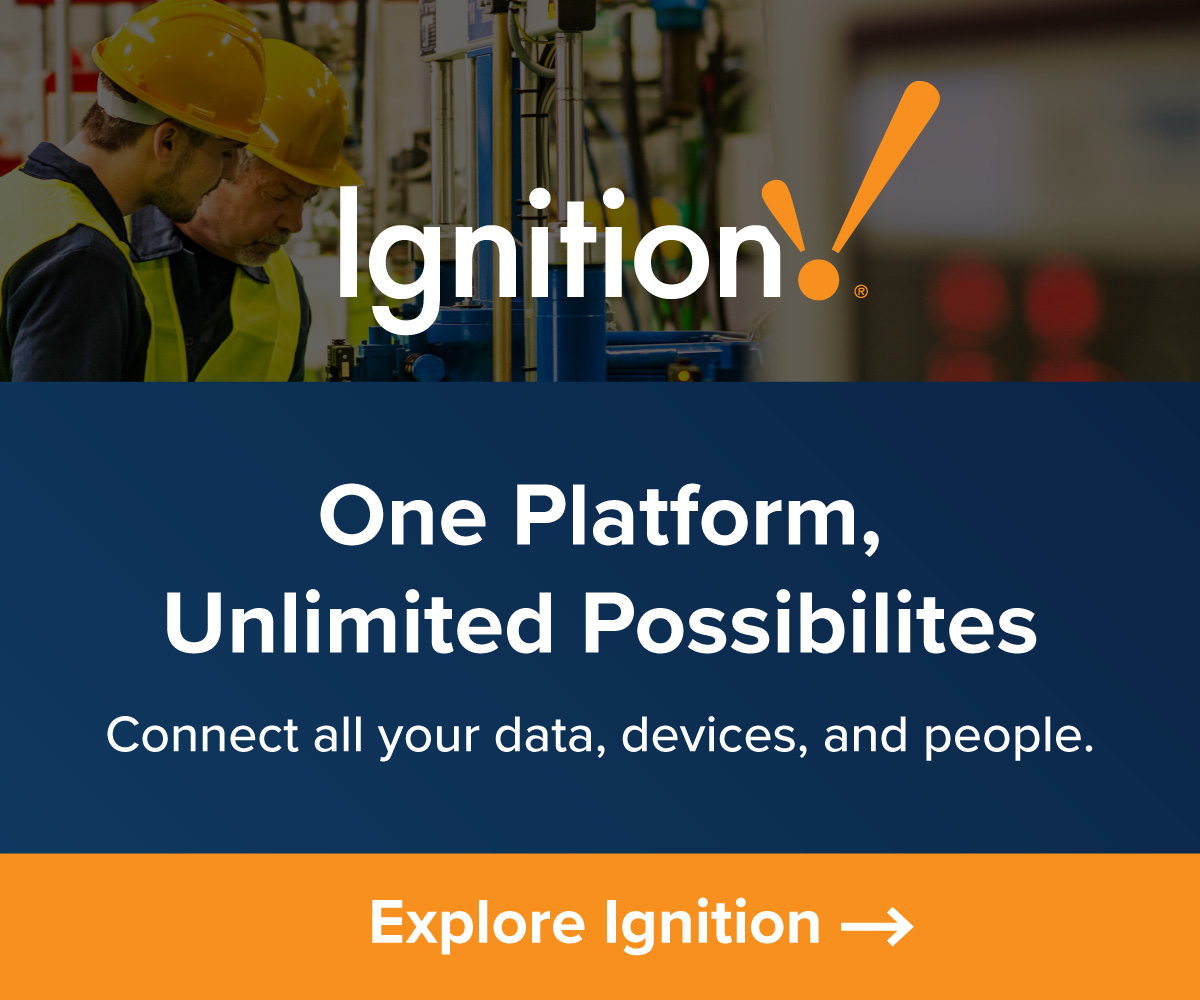by Gary Mintchell | Mar 25, 2025 | Internet of Things, Networking
5G and private 5G cellular networks were all the rage a few years ago. They hype cycle has progressed. I’ve seen some examples of real-world applications. It remains more promise than use at this time.
However, some news continues to flow through my system. This one is a partnership of sorts between Alcatel-Lucent Enterprise (ALE) and Celona. This new turnkey solution integrates with ALE’s OmniVista, OmniSwitch, and OmniAccess Stellar networking portfolio, enabling secure and high quality connectivity across complex enterprise environments including large outdoor spaces.
The cutting-edge technology in ALE’s Private 5G solution is engineered for ultra-reliable connectivity in complex industrial settings such as manufacturing, refineries, logistics warehouses, and ports including airport apron/ramp areas. The Private 5G solution offers large-area wireless coverage, secure and reliable high-speed mobility, supporting real-time, critical industrial applications, leading to enhanced IoT and Industry 4.0 integration.
This technology enables connecting next-generation IoT devices and applications that demand ultra-low latency and deterministic performance in enterprises pioneering the use of state-of-the-art devices and technologies, including autonomous guided vehicles (AGVs), robotics, HD video analytics, augmented reality (AR), and virtual reality (VR) applications, all of which will benefit from robust wireless connectivity.
ALE is integrating Private 5G with its existing solutions, such as OmniVista Cirrus, OmniSwitch LAN, and OmniAccess Stellar WLAN, to deliver reliable augmented coverage across industrial sites, offices and campuses. This approach ensures end-to-end secure Zero Touch Network Access and high-performance connectivity for seamless operations and advanced applications.
Private 5G powered by Celona delivers on the promise of strong security with robust SIM authentication and Celona’s patented MicroSlicing and Aerloc technologies, which ensure reliable service and application-level SLAs, policy enforcement, and zero trust security for business-critical applications.
by Gary Mintchell | Jan 21, 2025 | Internet of Things, Sensors, Wireless
Following the “fieldbus wars” came the “wireless wars.” Bringing the entire automation and control community together for standards seemed to be The Impossible Dream. I predicted that the market would settle things, and it did.
Wireless sensors ushered in the Industrial Internet of Things era. One constant concern for engineers was powering the many sensors—many, or most, requiring batteries.
I didn’t have to attend CES to get news. I preferred the vacation in Australia and New Zealand we took instead of a crowded Las Vegas. This news comes from a company I’ve never heard of (always a joy).
G-Lyte to Introduce Sensitized Solar Cell Technology To Create a Durable Alternative to Disposable Batteries
(Aside: I take about 75 lbs. Of household batteries to recycling from our community every month. This keeps the toxic chemicals out of the landfill. Plus, companies really do recover the chemicals for reuse.)
Every day, consumers discard more than 72 million non-rechargable batteries contributing to high levels of toxicity that pose a serious risk to the environment while also needlessly driving up consumer prices. Recognizing this urgent need for alternative device powering solutions, G-Lyte has perfected their best-in-class, proprietary Dye Sensitized Solar Cell (DSSC) technology to create a durable, high-efficiency power source in low light environments that’s eco-friendly and 99%-plus recyclable.
Created as an embedded technology for product integration at the OEM level, G-Lyte is designed to power such products as computer accessories, remote controls, electronic shelf labels (ESLs), smart watches, trackers, sensors and more.
Manufactured for integration into both existing and new electronic devices, G-Lyte’s dynamic team of scientist-inventors work with product manufacturers at every level of the engineering process to evaluate their products’ power requirements and the prevailing lighting conditions in which the device will ultimately operate to first determine if the photovoltaic in-dye solution is, in fact, the best approach before deploying standard or custom sized and shaped products to power the device. G-Lyte also offers the only cell efficient in indoor conditions and stable under prolonged direct sun exposure.
by Gary Mintchell | Oct 18, 2024 | Internet of Things, Operations Management
Moira Gunn of TechNation podcast just interviewed Gary Shapiro, longtime head of the Consumer Technology Association managers of the CES in January. He talked about the company pivots he had experienced.
I have followed Digi International for many years. I won’t say that it pivots often, but it does manage to move to newer use cases and technologies while staying true to its connectivity origins.
This latest news centers on the launch of Digi 360, a subscription-based solution supporting ease-of-use, deployment visibility and optimized ROI for Digi cellular routers.
Every company that can possibly offer it tries for subscription-based sales in order to maintain a constant cash flow and hopefully lock in customers to long term service.
Delivering a comprehensive connectivity package, Digi 360 includes purpose-built devices, software, services and enhanced warranty to simplify the rollout of IoT projects and ease the challenges faced by enterprises when configuring, deploying and managing their deployments. With Digi 360, customers benefit from Digi’s robust devices that enable automation and edge computing across a wide range of enterprise, industrial and transportation environments, as well as the latest tools and resources to efficiently manage and secure deployments across evolving use cases.
- Management via Digi Remote Manager (Digi RM): Digi Remote Manager is an intelligent network command center, providing centralized control, management, security, and edge intelligence. Providing a single, secure platform that allows network health monitoring and instant alerts from across the network, Digi RM has the ability to both diagnose and repair issues, reducing the need to deploy a technician or roll a truck. Additional features include API access, simplified configuration, out-of-band management, scheduled automation and access to a range of value-added services.
- Digi Cellular Devices: Digi’s devices offer configurability, scalability and purpose-built design. Additionally, Digi edge devices are designed for extended product lifecycles, world-class reliability, mobile and fixed wireless access and integrated software and security, to keep critical systems running efficiently.
- Customer Care: Digi Expert Support provides technical assistance, including 24/7/365 expert global support within a four-hour response service level agreement for priority case resolution, configuration and network troubleshooting, return merchandise authorization (RMA) assistance, and feature/functionality inquiries. Professional services are also available for integration with third-party devices, code debugging, and more, along with a Customer Success program for mission-critical deployments.
- Limited Lifetime Warranty: Digi 360 includes an enhanced Limited Lifetime Warranty, offering edge device protection for active subscribers for the full length of the subscription.
by Gary Mintchell | May 7, 2024 | Automation, Embedded Control, Industrial Computers, Internet of Things, Interoperability
Interoperability forms a key feature for useful technology. Think of train rail gauges. Or shipping cargo containers. Or much of our industrial technology—much, but far from all. The drive of technology application suppliers for proprietary lock in is strong. Many will open up only as much as customers demand immediately.
This news comes from ABB and the Linux Foundation regarding a new interoperability initiative for industrial applications. They call it “Margo” which is Latin for “edge.” Cute, eh? Better than many names I’ve seen over the years.
In brief:
- Margo, a new open standard initiative for interoperability, will address key roadblocks to digital transformation
- The initiative is hosted by the Linux Foundation and driven by a founding group of industrial automation solution providers, including ABB Process Automation and ABB Machine Automation (B&R)
- Margo aims to unlock interoperability at the edge – a key layer of Industrial IoT ecosystems where plant data is transformed into AI-powered insights to drive efficiency and sustainability
- At the Hannover Messe on April 23, 2024, founding members ABB (including B&R), Capgemini, Microsoft, Rockwell Automation, Schneider Electric (including AVEVA) and Siemens announced collaboration on a new initiative to deliver interoperability for Industrial IoT ecosystems.
Hosted by the Linux Foundation and open to further interested parties, the Margo initiative draws its name from the Latin word for ‘edge’ and will define mechanisms for interoperability between applications, devices and orchestration software at the edge of industrial ecosystems. In particular, Margo will make it easy to run and combine applications from any ecosystem member on top of the hardware and runtime system of any other member. Margo aims to deliver on its interoperability promise through a modern and agile open-source approach, which will bring industrial companies increased flexibility, simplicity and scalability as they undergo digital transition in complex, multi-vendor environments.
“Mastering efficiency, flexibility and quality faster than competitors is key to success in today’s industrial world,” said Bernhard Eschermann, CTO, ABB Process Automation. “Digitalization can help deliver on these benefits, but digital ecosystems require a robust, secure and interoperable framework at the edge, connecting operations and information technologies. For ABB, a long-standing advocate of open automation systems, driving a forward-thinking collaborative initiative like Margo is key to achieving this goal.”
“The more sources you get data from, the better the decisions you can make,” explained Florian Schneeberger, CTO of ABB’s Machine Automation division (B&R). “Yet, while the benefits of digitalization increase with scale, so do the challenges of navigating heterogeneous industrial ecosystems. That’s why interoperability is so crucial to unlocking the full potential of digitalization. It empowers organizations to adopt and scale Industrial IoT solutions at full speed without large teams of IT specialists.”
In March 2024, ABB became a member of the Linux Foundation. This will enable the company to further enhance efforts in promoting open community collaboration, helping unlock innovation and enable better products and experiences for customers. This further strengthens ABB’s commitment to open standard based systems.
by Gary Mintchell | Mar 26, 2024 | Automation, Edge, Internet of Things, Open Source, Operations Management
The 5th annual Eclipse Foundation IoT and Edge Commercial Adoption Survey actually holds few surprise but shows ongoing trends of investment. I’m not sure if it is good news or worrisome that the C-suite seems to be more involved. These people hold the purse strings, but they also usually hold unrealistic expectations (oversold by engineers?) about the eventual benefits of technology adoption.
The survey includes a comprehensive analysis derived from responses of over 1067 professionals in the IoT and edge computing domain. Conducted online from April 4 to July 5, 2023, the survey offers valuable insights into the evolving IoT and edge computing ecosystems by identifying the requirements, priorities, and challenges faced by organisations that deploy and use commercial solutions, including those based on open source technologies.
“Consistent with our previous surveys, the continuous growth and adoption of IoT and edge computing remains evident. The data reflects a notable increase in the number of managed devices and larger investments, indicative of a scale-up in deployments,” said Mike Milinkovich, executive director of the Eclipse Foundation. “Particularly notable is that the C-suite significantly influences decision-making for IoT and edge investments. This underscores the strategic value that businesses place on solutions based on open technologies in real-world deployments. Open source components are recognised as vital enablers of success.”
Six of the key takeaways from the survey data include:
- IoT Adoption Surged in 2023: 64% of respondents are now deploying IoT solutions, up from 53% in 2022. An additional 23% plan to deploy within 12-24 months. Less than 5% have no IoT deployment plan.
- Edge Computing Adoption Holds Steady, Acceleration Anticipated: Adoption of edge computing solutions remains at 33% (same as 2022), with an additional 30% indicating plans to deploy within the next 24 months. 27% are still evaluating edge platforms, while only 10% have no plans to deploy edge solutions.
- Rising Investments Signal Scale-Up in Production Deployments: 17% of respondents spent between $1-10M in 2023 (more than double that of 2022), growing to 23% in 2024. 5% anticipate spending over $10M. This trend indicates a transition from proof-of-concept to ROI-focused deployments.
- Growing Number of IoT & Edge Assets per Deployment: Deployments of fewer than 1K managed assets will remain steady or decline, while larger deployments are on the rise, with an impressive 10% of deployments consisting of 50K or more devices. Regarding asset implementation, the mix between greenfield and brownfield is almost equal.
- IoT is Increasingly Strategic with the C-Suite Driving Investment Decisions: 49% of organisations reveal that the C-suite predominantly drives decisions. This marks a significant increase from the 38% reported in 2022, indicating a growing influence of top-level executives in shaping investment choices within the realm of IoT and edge technologies.
- 75% of Organisations Surveyed Embrace Open Source in IoT and Edge: 75% of organisations are actively incorporating open source into their deployment plans. The widespread use of IoT and edge solutions based on open source technologies highlights how open source has become key in shaping today’s technology landscape.
The IoT and Edge Commercial Adoption Survey is sponsored by the Eclipse IoT and Sparkplug Working Groups. It serves as a valuable complement to the annual IoT Developer Survey, a vital source of strategic insights from the development front lines. The Eclipse IoT community represents one of the largest IoT-focused open source collaborations in the world, with 45 members and over 50 projects. Eclipse IoT projects have been broadly adopted by leading organisations across a variety of verticals to deliver commercial IoT and edge-based solutions and services.
by Gary Mintchell | Feb 27, 2024 | Edge, Internet of Things, Operations Management
Computing at the Edge of the network remains a crucial and growing part of a plant’s architecture. Digi International positioned itself as an enabler of data transmission for a long time. This news is a new product exploiting some of the 5G cellular technology benefits.
Digi International announced market launch of Digi IX40, a 5G edge computing industrial IoT cellular router solution. Digi IX40 is purpose-built for Industry 4.0 use cases such as advanced robotics, predictive maintenance, asset monitoring, industrial automation and smart manufacturing. Fully integrated with Digi Remote Manager, this solution’s capabilities improve security and scalability while ensuring speed, reliability and efficiency.
Digi IX40 integrates Digi Remote Manager (Digi RM) for rapid configuration, automated security monitoring and simplified management. Digi RM — the cloud-based command center for IoT deployments — gives businesses critical insights into their network operations for more data-driven decisions. Likewise, Digi RM supports secure terminal access for out-of-band management of edge devices via serial ports and a command-line interface.
Key Digi IX40 features include:
- Global 5G and LTE support for public and private cellular networks
- Integrated edge computing capabilities for applications requiring edge intelligence and real-time processing
- The Digi Accelerated Linux operating system (DAL OS)
- Simplified configuration and management with Digi Remote Manager
- FIPS 140-2 validation for encryption of sensitive data
- Ethernet, SFP, serial, I/O and Modbus bridging
- Powerful failover options, including fiber and 4G LTE for ultimate redundancy
- Digi SureLink, VRRP+ and dual SIMs for resilient cellular connectivity
- GNSS receiver supporting GPS, GLONASS, BeiDou and Galileo
- License-free enterprise software: VPN, firewall, logging and authentication
- Rugged enclosure with DIN rail and shelf mounting options
- FirstNet Capable models to meet the demands of emergency response
Digi Containers, a Digi value-added service, augments the Digi IX40 solution to facilitate cost-effective applications via lightweight Linux containers, giving businesses additional flexibility and scalability for their Industry 4.0 initiatives. Digi is proud to provide not only a Digi Containers solution for customers who want to run their own custom applications or binaries on Digi IX40, but we also provide vetted access to software from leaders in the Industry 4.0, Networking 2.0, and industrial protocol services.
Digi WAN bonding, an add-on service available through Digi Remote Manager, provides ultra-fast, ultra-reliable network connectivity. Digi WAN Bonding enables users to centrally set up, deploy, and manage the bonding of multiple WAN Internet connections together on Digi IX40 for a combination of increased throughput speeds, WAN smoothing, packet redundancy, and seamless failover for always-on Internet connectivity. Digi WAN Bonding can scale to hundreds or thousands of sites to ensure you are getting the most robust connectivity for your entire fleet or network that is always ready, always online.




